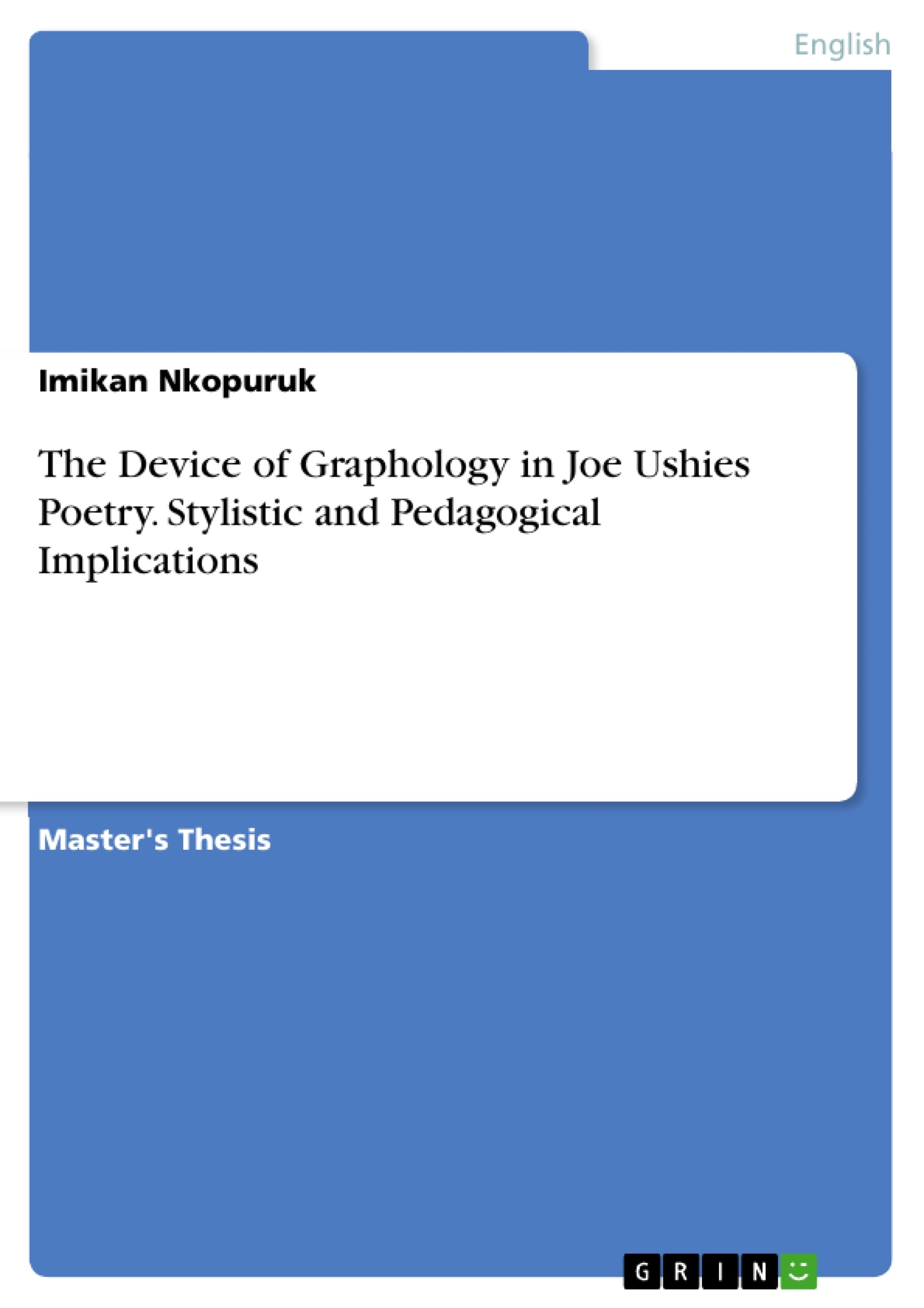This dissertation is an investigation into the poetry of Joe Ushie from the perspective of linguistics.
There are different linguistic levels of analysing a literary or non-literary text. These levels include: syntax, semantics, lexis, phonology, graphology and others; in order to achieve the objectives of this study, this essay investigates the deployment of graphology as a device of meaning and aesthetics.
Graphology is the study of language in print; a stylistic instrument which makes Ushie’s writing peculiarity an illustrating example of style as deviation from the actual linguistic norm. The study adopts foregrounding and multimodality as theoretical frameworks to the stylistic interpretations of the poetry of this author. Foregrounding as a theory was first put forward by Jan Mukrovsky at the University of Prague.
Significantly, by establishing a modified model of categorisation of Graphological devices, this research will improve the teaching and learning of graphology as a device of literary composition by way of assisting learners to develop linguistic abilities necessary for them to read, understand and respond to literary and non-literary works sensitively.
Table of Contents
- Chapter One: Introduction
- 1.1 Background to the Study
- 1.2 Statement of the Problem
- 1.3 Objectives of the Study
- 1.4 Research Questions
- 1.5 Significance of the Study
- 1.6 Scope of the Study
- 1.7 Limitations of the Study
- 1.8 Definition of Terms
- Chapter Two: Literature Review
- 2.1 The Nature of Poetry
- 2.2 The Stylistic Features of Poetry
- 2.3 Graphology and Poetry: A Critical Appraisal
- 2.4 Joe Ushie: A Profile
- 2.5 The Use of Graphology in Ushie's Poetry
- Chapter Three: Methodology
- 3.1 Data Source and Sampling Techniques
- 3.2 Research Design
- 3.3 Instruments of Data Collection
- 3.4 Data Analysis
- Chapter Four: Data Presentation and Analysis
- 4.1 The Device of Graphology in Joe Ushie's Poetry
- 4.2 The Pedagogical Implications of Graphology in Ushie's Poetry
- Chapter Five: Summary, Conclusion and Recommendations
- 5.1 Summary of Findings
- 5.2 Conclusion
- 5.3 Recommendations
Objectives and Key Themes
This dissertation aims to investigate the use of graphology as a stylistic device in the poetry of Joe Ushie, examining its implications for both stylistic analysis and pedagogical practice. The study explores how graphology, through its visual and structural elements, contributes to the meaning and aesthetic impact of Ushie's poetry. It also delves into the pedagogical potential of graphology, considering its role in enhancing students' understanding and appreciation of poetry.
- The stylistic features of Joe Ushie's poetry
- The role of graphology in shaping the meaning and impact of Ushie's poetry
- The pedagogical implications of graphology in poetry analysis and teaching
- The significance of graphology in enhancing the understanding and appreciation of poetry
- The contribution of graphology to the overall aesthetic experience of poetry
Chapter Summaries
Chapter One provides a comprehensive introduction to the study, outlining its background, objectives, research questions, and significance. It also discusses the scope and limitations of the research. Chapter Two presents a detailed literature review, exploring the nature of poetry, its stylistic features, and the role of graphology in both poetry and literary analysis. The chapter also profiles Joe Ushie and analyzes the use of graphology in his poetry. Chapter Three delves into the methodology employed in the study, including data source, sampling techniques, research design, data collection instruments, and data analysis methods. Chapter Four presents the findings of the study, analyzing the use of graphology in Ushie's poetry and exploring its pedagogical implications.
Keywords
This dissertation focuses on the critical areas of poetry analysis, stylistic features, graphology, and pedagogical implications. It specifically examines the poetry of Joe Ushie, exploring his use of graphological elements and their impact on the meaning and appreciation of his work. Key terms include: graphology, stylistics, poetry analysis, pedagogical practice, Joe Ushie, and visual elements in poetry.
- Quote paper
- Imikan Nkopuruk (Author), 2019, The Device of Graphology in Joe Ushies Poetry. Stylistic and Pedagogical Implications, Munich, GRIN Verlag, https://www.grin.com/document/494017



